In 1874, the closest mainline railroad to Olympia, Washington, was the Northern Pacific Railroad some 15.5 miles south at a village called Tenino. Because of cheaper construction costs, the incorporators of the railroad decided to build a 3-foot narrow gauge system. Originally constructed to haul coal, the railroad never was extended to the coal mines around Tenino and relied on just hauling logs to be dumped into Puget Sound for revenue. Two round trips a day for hauling passengers between Olympia and Tenino were also made.
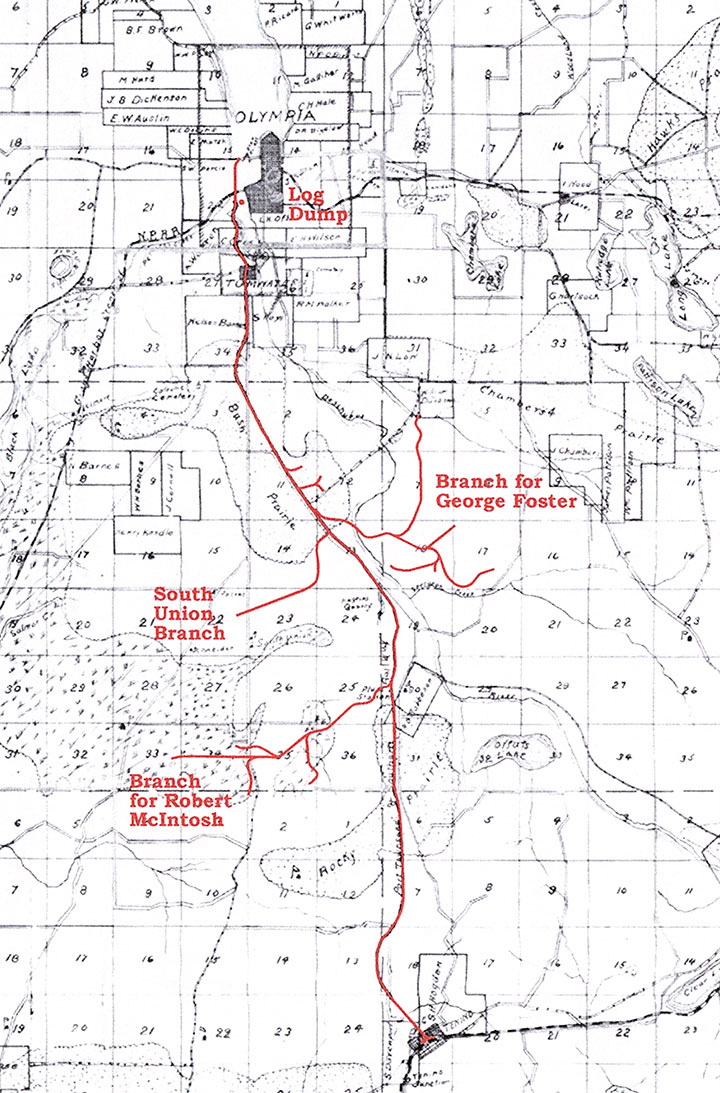
Not to scale
Map by James S. Hannum, M.D.
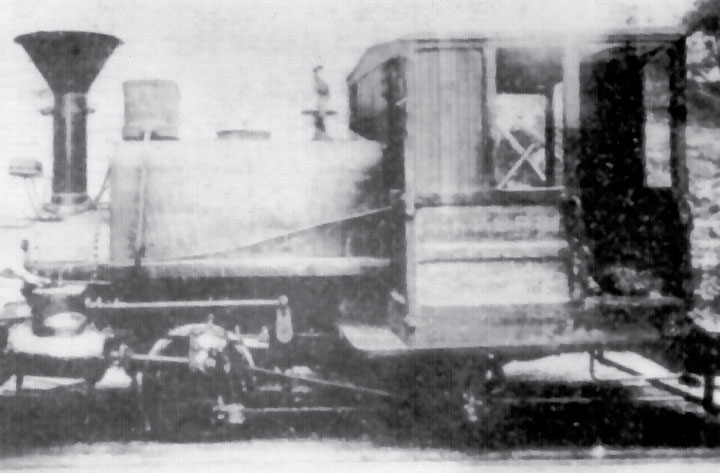
James S. Hannum, M.D.
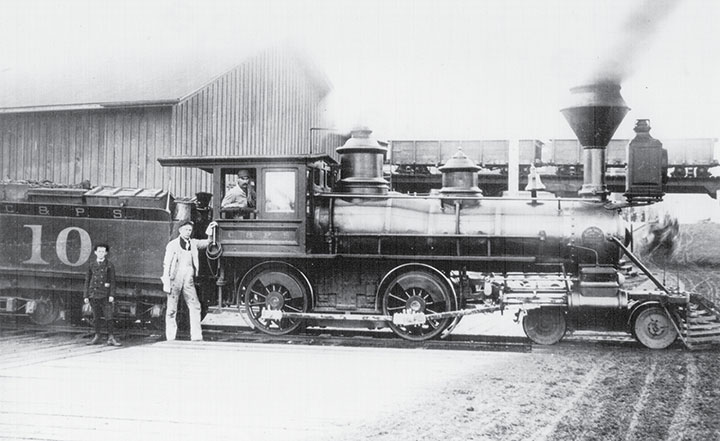
James S. Hannum, M.D.
The grading of the roadbed was begun on April 7, 1874, and it wasn’t until July 1878 until crews began laying 30–35-pound rail on the grade. The railroad gained elevation from 36 feet at Olympia to 250 feet at Tenino. In May 1874, a new locomotive from Baldwin arrived by sea. She was a 4-4-0 named the E. H. OUIMETTE and was #1 on the system, having 42-inch drivers and a total weight of 43,300 pounds. On August 1, 1878, a passenger train from Olympia to Tenino made its first run. The official name of the railroad was the Olympia and Tenino Railroad Company.
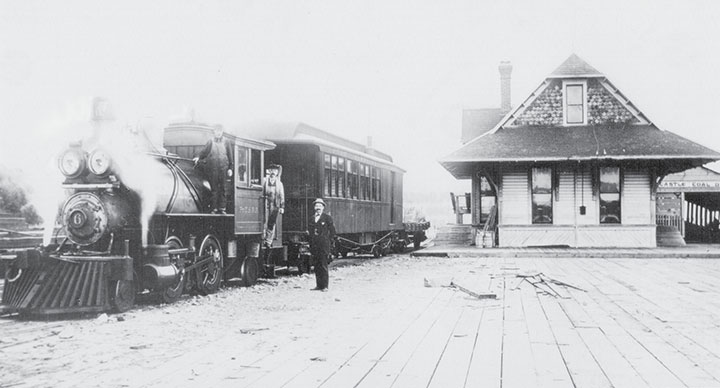
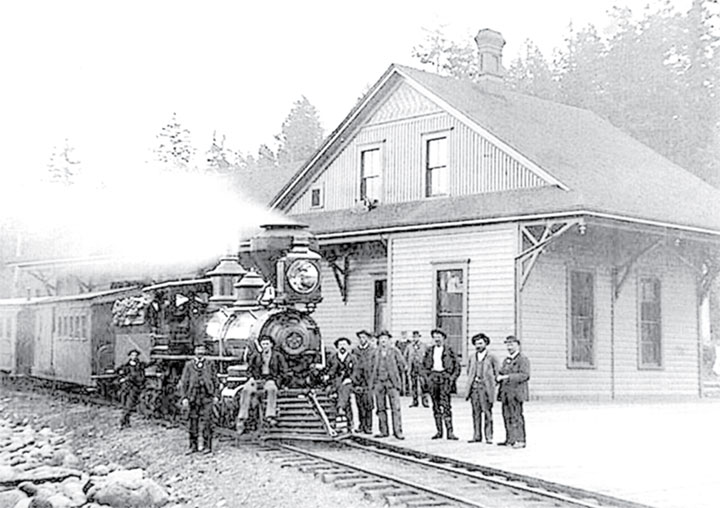
Photo collection of James S. Hannum, M.D.
Three different logging spur systems were eventually built off the mainline for three different operators. The first branch on the system was operated by logger George Foster. He employed a large force of men in cutting and barking the logs, and a number of teams in hauling the logs to the railroad. In 1882, Mr. Foster had a large body of timber in the region of his camp, sufficient enough for several years of logging. In that same year, the railroad was bringing in 55,000 board feet of logs daily. Five cars were used, and three trips were made each day.
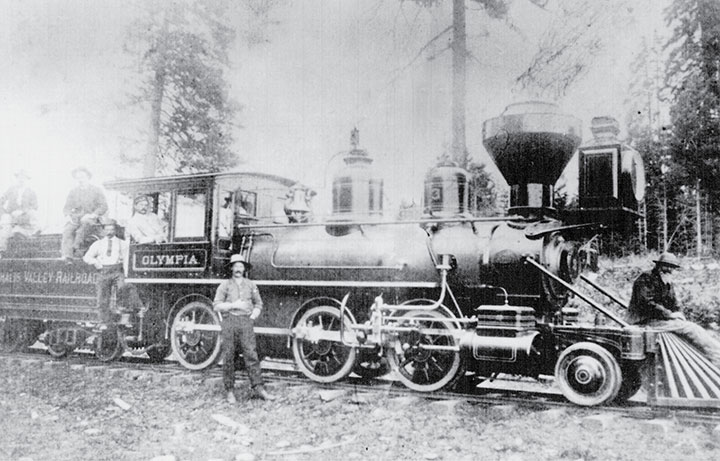
Photo collection of James S. Hannum, M.D.
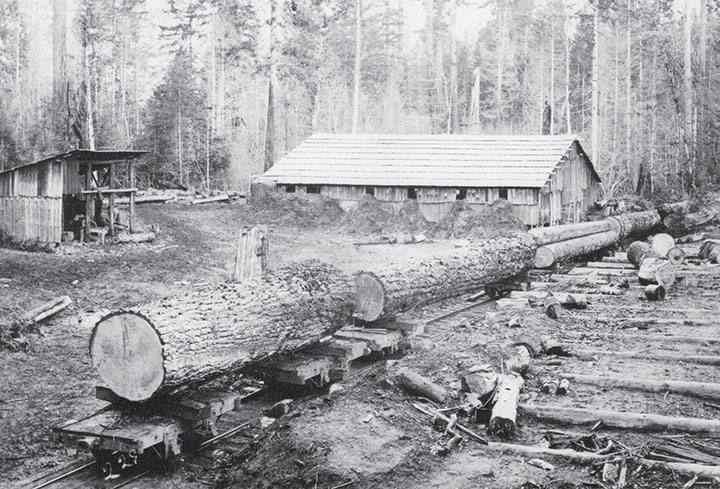
Photo, Henderson House Museum, James S. Hannum, M.D. Collection.
Next, the South Union branch of the railroad was operated by the Morris Brothers (George W., Philip Guy, Robert James, and Frank M.) who were affiliated with the Tacoma Mill Company. They employed the use of one of the Olympia and Tenino’s locomotives (probably the first #2), which appears to be an 0-4-0 built by the Globe Iron Works of San Francisco with a flat front end suggesting she probably had a “gypsy” spool on the front of the frame. She was sold in 1887 to be used in the construction of the Puget Sound and Chehalis Railroad which was just getting started at Mud Bay about four miles west of Olympia.
The last branch of the railroad was operated by Robert B. McIntosh who was engaged in the logging business.
A fourth logger, by the name of George Washington Bush, logged his property adjacent to the railroad. In 1885 he employed 15 men in his logging operation and his daily output was 16,000 board feet of logs. He sold his logs to the Tacoma Mill Company.
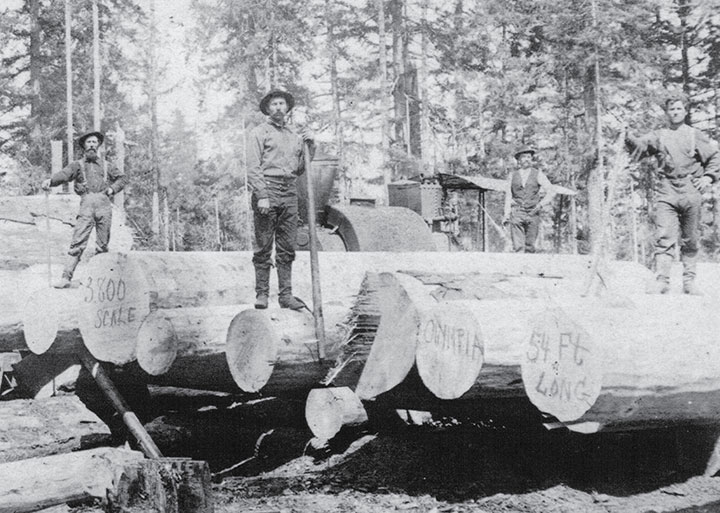
Photo collection of James S. Hannum, M.D.
In August 1881, the railroad name was changed to the Olympia and Chehalis Valley Railroad Company.
In 1882, the railroad purchased its second #2 which was an 0-4-0T built by Porter-Bell and Company in 1872 for the Walla Walla and Columbia River Railroad and named WALLULA. She weighed a mere 15,000 pounds, and in January of that year was in the machine shops of the Tacoma Iron Works receiving a complete overhaul. She was expected to soon be operating doing the valuable work of hauling logs. She was, reportedly, involved in a fire at Tenino in 1889 which most likely destroyed her cab.
The last locomotive purchased by the railroad was a new 2-6-0 built by Baldwin in 1884. She was their #3 and named OLYMPIA, had 37-inch drivers, and weighed 38,000 pounds. All of the railroad’s locomotives were wood burners.
In January 1885, the railroad just finished the construction of a new freight car at their depot, a fact which might be taken as a good business indication. The railroad owned a total of only six freight cars and two passenger cars.
In 1890, the narrow gauge railroad ceased to exist when it was purchased by the Port Townsend Southern Railroad for $300,000 and then standard gauged, but that’s another story. All of O and CV locomotives, except the first #2, went to the Columbia and Puget Sound Railroad, a coal hauling narrow gauge railroad in the Seattle area.
